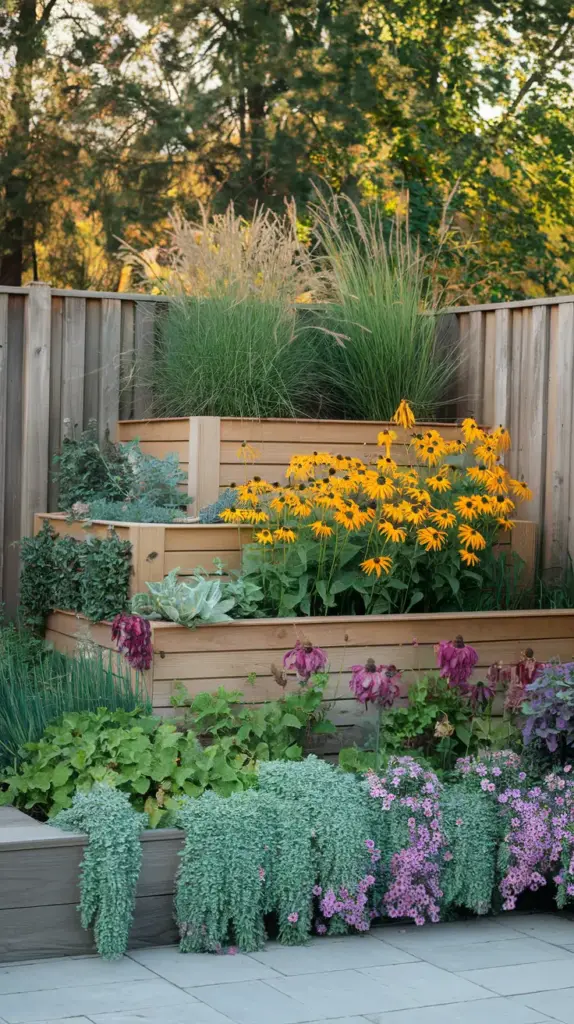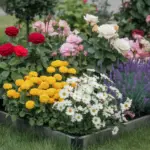8. Tiered Garden Design: A Game-Changer for Small Spaces

Let me tell you about my journey with tiered gardens – it’s been quite the adventure! When I first started gardening in my modest backyard, everything was on one level, and boy, was I missing out on some serious potential. After discovering the magic of vertical space, I completely transformed my garden into a multi-dimensional paradise.
Building Your First Tiered Garden
Creating a tiered garden isn’t as complicated as it might seem. I learned this the hard way after initially overthinking the whole process! The key is starting with a solid foundation. Multi-level planters can be constructed using various materials – I’ve had great success with both wooden boards and concrete blocks. The secret is ensuring proper drainage between each level to prevent water-logging.
My first attempt at building tiers involved recycled pallets, which turned out to be a fantastic budget-friendly option. Just make sure to treat the wood properly if you go this route. For stability, each tier should step back about 6-8 inches from the one below it.
Mastering Height Variations
One thing that really transformed my tiered garden was understanding plant height dynamics. Here’s what I’ve learned works best:
- Tall plants (3+ feet) for the back tier
- Medium-height plants (1-2 feet) for middle sections
- Cascading flowers and ground covers for the front edges
I love using ornamental grasses like Fountain Grass in the back tier – they provide wonderful movement and year-round interest. For the middle tier, perennials like Black-Eyed Susans and Coneflowers create a stunning display.
Selecting Perfect Cascading Plants
The game-changer in my tiered garden has been the cascading plants. Trailing lobelia and creeping phlox have become my go-to choices. These flowering cascades create a waterfall effect that makes the whole garden come alive.
Some of my favorite cascading combinations include:
- Wave petunias with sweet alyssum
- Trailing verbena with calibrachoa
- Creeping thyme with ice plant
Maximizing Visual Impact
Here’s a pro tip I wish I’d known earlier: use the rule of thirds when planning your tiers. I divide my garden vertically into three sections and ensure there’s something interesting at each level. This creates a natural flow that draws the eye through the entire garden.
For year-round interest, I incorporate:
- Evergreen plants for structure
- Seasonal bloomers for color bursts
- Textural elements like ornamental grasses
- Small architectural features like mini trellises
Want to know another game-changing idea for your garden? Our next section on “Color-Themed Flower Borders” will show you how to create stunning visual harmony using strategic color combinations. Just click the “next” button below to discover how to transform your garden into a coordinated masterpiece of colors that bloom throughout the seasons!
Remember, the key to a successful tiered garden is planning with purpose while allowing room for creative expression. It’s amazing how much beauty you can pack into a small space when you think vertically!









GIPHY App Key not set. Please check settings